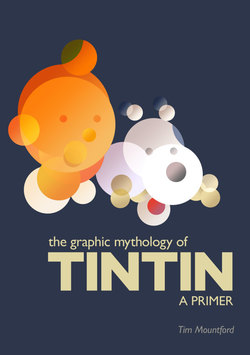The Graphic Mythology of Tintin - a Primer

Реклама. ООО «ЛитРес», ИНН: 7719571260.
Оглавление
Tim MDiv Mountford. The Graphic Mythology of Tintin - a Primer
1. Prologue
2. Beginnings
The Opportunity of the Century
3. Stories. Tintin: Le Petit Vingtième
Quick and Flupke
Tintin: the countries of the world and others beside
Tintin. reporter du Soir ‘volé’
Tintin, le journal des jeunes de 7 à 77 ans
4. Meanings
From language to myth
The myth within Tintin
The myth about Tintin
5. Epilogue
Tintin and the uncanny valley
Over-protective
6. Bibliography
7. About the author
Coming soon
Отрывок из книги
The graphic work of the Belgian artist Georges Remi, better known by his nom de plume Hergé, ranks as one of the richest and most influential in the history of European comic strip art. Regarded as a father figure in the history of bande dessinée (the French term means literally ‘drawn strip’ and is commonly abbreviated to BD), he didn't invent the format per se, but made an immense contribution to its development, maturity and above all its public acceptance. The enormous quantity of work he produced during some six decades of the twentieth century testifies to an artist and storyteller of considerable skill and sensitivity, and demonstrates how the medium of the comic strip has evolved to become a language as capable of literary expression as mere prose.
In truth it is of course one creation that has marked out Hergé for worldwide acclaim: that of the perpetually youthful reporter Tintin. Unknown to many, Hergé’s other work contains the same rich vein of graphic originality, style and wit; from his early adolescent sketches, through the illustrations and graphic motifs that he created for newspapers, magazines, books and advertisements, to the numerous story strips for which he is virtually deified by ranks of European BD artists, we can see in them all a creative talent, honed and perfected at the hands of an industrious and expressive artist. In the French-speaking world Tintin has no equal. His many admirers and imitators may adopt the plastic language of his world (the fluid accuracy of Ia ligne claire – the clear line – and the muted palette which typifies I’école belge – the Belgian school of BD) yet few have equalled Hergé’s impact on global culture.
.....
I didn’t realise it at the time but I was intuiting the existence of a well-worn path through the field of BD. Now twenty years after writing my thesis, I discovered that, as far back in the other direction from my dissertation, in 1970 Pierre Fresnault-Deruelle had also written a university thesis about bande dessinée (later published in 1972) which examined the work of Hergé, E.P. Jacobs and Jacques Martin using semiotics, the concept advanced by Barthes for deconstructing meaning in visual elements. (Since then Fresnault-Deruelle has become one of the leading semiologists, a university professor at the Panthéon-Sorbonne in Paris and author of dozens of books about visual language in BD. The greater part of analytical writing about BD in French is firmly rooted in the semiotic model.)
On balance I think Thompson was mistaken about Hergé's view of himself and his work. Sadoul's interviews for instance reveal his openness to psychoanalysis; he had undertaken therapy with a Jungian analyst when his troubled psychological state had affected his creative work, indeed in a letter he wrote to Benoît Peeters cited in his book Lire Tintin, he claimed to have read most of Jung’s writings. (Smolderen and Sterckx note how assiduously he documented his dreams.) Hergé was intrigued by paranormal ideas even if he remained agnostic about the grander metaphysical questions – the various allusions to the Unknown in Tintin stories reflect Hergé's open-mindedness towards esoteric matters. He was more pragmatic Belgian than intellectual French, which was the overriding tendency of many Tintinologists. Thompson also seemed to overlay his own no-nonsense sensibility onto Hergé, and conflated the artist's right to an opinion about his work with the right of his critics to think differently. Hergé deemed introspective reflection as an inhibitor during the creative process, but he did not appear to deny the place of critical analysis. He told Sadoul: 'Whether I'm conscious of it or not, I express myself in what I write and draw; without wanting it or knowing it, I put into it what I think, what I feel and who I am. I'm working too much to have time to analyse myself. And fundamentally that's a good thing: don't think too much, don't be always focused on oneself. Primarily to do, afterwards to look!' He wrote in correspondence to Peeters that it should be possible to do an analysis (in the psychoanalytical sense) of his albums. ‘If I’ve used symbols in my stories then it’s spontaneous and thus totally unconscious.’
.....